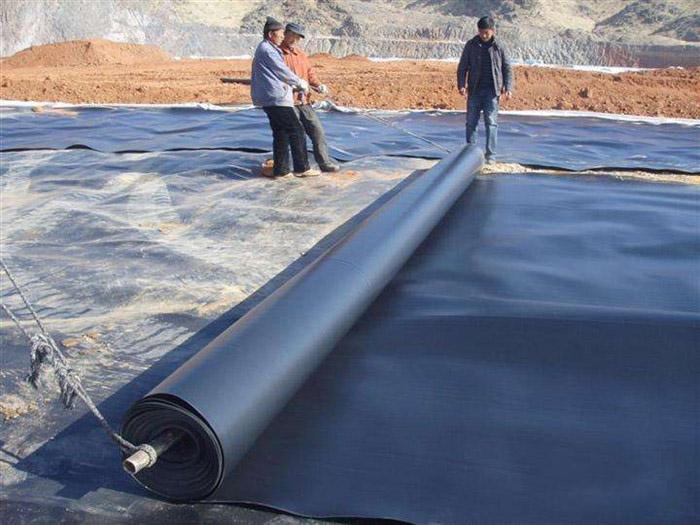Description
Geomembrane construction method:
Do not drag or drag the geomembrane during transportation to avoid stabbing by sharp objects.
1. It shall extend from the bottom to the high position, not too tight, and a margin of 1.50% shall be reserved for local sinking and stretching. Considering the actual situation of the project, the slope is laid from top to bottom;
2. The longitudinal joints of two adjacent frames shall not be on a horizontal line and shall be staggered by more than 1m;
3. The longitudinal joint shall be more than 1.50M away from the dam toe and bend toe and shall be set on the plane;
4. Slope first and then site bottom;
5. During slope laying, the film spreading direction shall be basically parallel to the large slope line.

Geomembrane laying:
1. Before laying geomembrane, corresponding acceptance certificates of civil works shall be provided.
2. Before cutting the geomembrane, the relevant dimensions shall be measured accurately, and then cut according to the actual situation. Generally, it is not suitable to cut according to the dimensions shown in the figure. It shall be numbered one by one and recorded in detail on the special form.
3. When laying geomembrane, try to reduce the number of welds and save raw materials as much as possible on the premise of quality. It is also easy to improve quality.
4. The overlapping width of the joint between membranes is generally not less than 10cm. Generally, the weld arrangement direction is parallel to the large slope, that is, along the slope direction.
5. Generally, in the section with abnormal corners, the joint length should be minimized. Except for special requirements, no weld shall be set on the slope with gradient greater than 1:6 within 1.5m from the top slope or stress concentration area.
6. Artificial folds shall be avoided during the laying of geomembrane. When the temperature is low, it shall be tightened and paved as much as possible.
7. After the geomembrane is laid, walking and moving tools on the membrane surface shall be reduced as far as possible. All objects that can cause harm to the impervious membrane shall not be placed on the membrane or carried on the membrane to avoid accidental damage to the membrane.